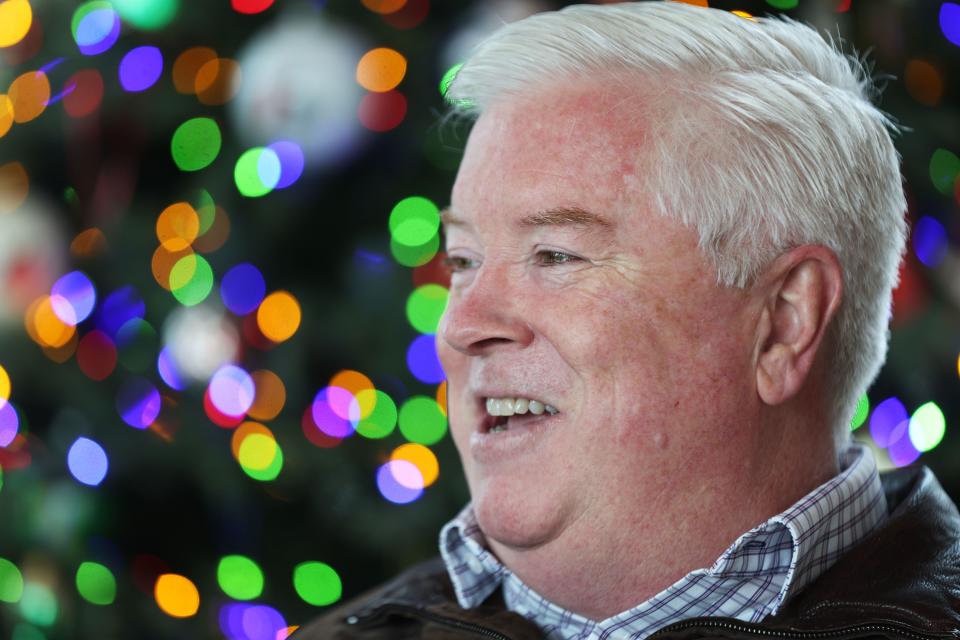Temple diplomacy: Catholic ex-ambassador heralds interfaith unity amid temple strife
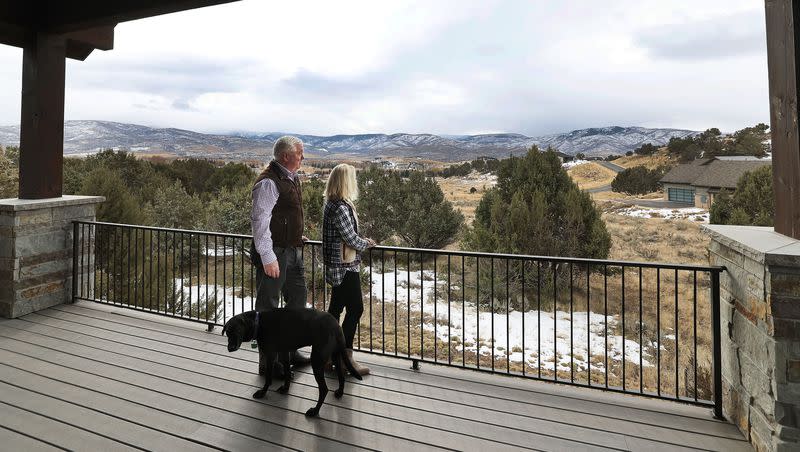
- Oops!Something went wrong.Please try again later.
- Oops!Something went wrong.Please try again later.
The way George and Mary Glass tell it, God led them to Utah, then welcomed them with a flood.
The Oregon natives had just completed their four-year stint in Portugal, where George served as U.S. ambassador under the Trump administration. Grateful for time spent in a country that cherished their Catholic faith — and weary from the ceaseless workload and a close call with COVID-19 — the two were looking for a new home far from Portland where they could slow down, indulge their passion for skiing, and contribute to their religious community.
They found such a place in Red Ledges, an affluent gated neighborhood overlooking Heber Valley and the Wasatch Back. Despite the inundated basement they discovered on arrival — a pipe had burst just hours before closing on the sale — the Glasses were immediately drawn to the town for reasons other than its proximity to Deer Valley.
“We love to ski,” George explained, “but it’s the lifestyle here; to be able to drive home from Mass on Sunday and have families walking to church. ... It warms our hearts.”
The Glass family rejoiced along with their Latter-day Saint neighbors when The Church of Jesus Christ of Latter-day Saints announced last year that the Heber Valley Utah Temple would be built just down the road.
“We were absolutely delighted,” George said. “It shows the strength and the viability of your spirituality. And it shows the strength of that spirituality in a community to go out and build a (temple).”
Such an event warranted celebration regardless of religious affiliation, George thought. He was surprised when the enthusiasm wasn’t shared in equal measure by other residents in the area surrounding the proposed temple site.
“They said, ‘No, you’ve got to come over to our side,’” George recounted. “And I said ‘There isn’t a side.’ If the Mormon church wants to build a church in this community, and especially a temple, then they have every right to do so.”
In the last several months, despite unanimous county approval for the building, a group of residents from Red Ledges, located a few blocks from the temple plot, have spearheaded two lawsuits against Wasatch County and launched a referendum effort to protest the project, arguing the religious structure is too bright, too disruptive and did not follow the proper legal process.
Those and other claims were addressed in public meetings by the deputy county attorney, the project’s principal architect, and a professional dark sky consultant prior to the county council’s unanimous approval of the project in November. The council’s decision followed unprecedented steps taken by the church to revise its initial plans, to make compromises and clarify misconceptions about lighting regulations, water drainage mechanisms, zoning policies and traffic mitigation.
For example, on lighting, the temple will now be one of the dimmest in the world, and exterior lights will shut off entirely at 11 p.m.
While George understands his neighbors’ concerns and said increased communication is certainly needed to clear up misinformation, he continues to defend the construction of the temple on the grounds of religious freedom, which he saw under attack in Portugal.
The end of this story, he hopes, will be one of interfaith unity as his local parish seeks to construct its own new house of worship in Heber City in coming years.
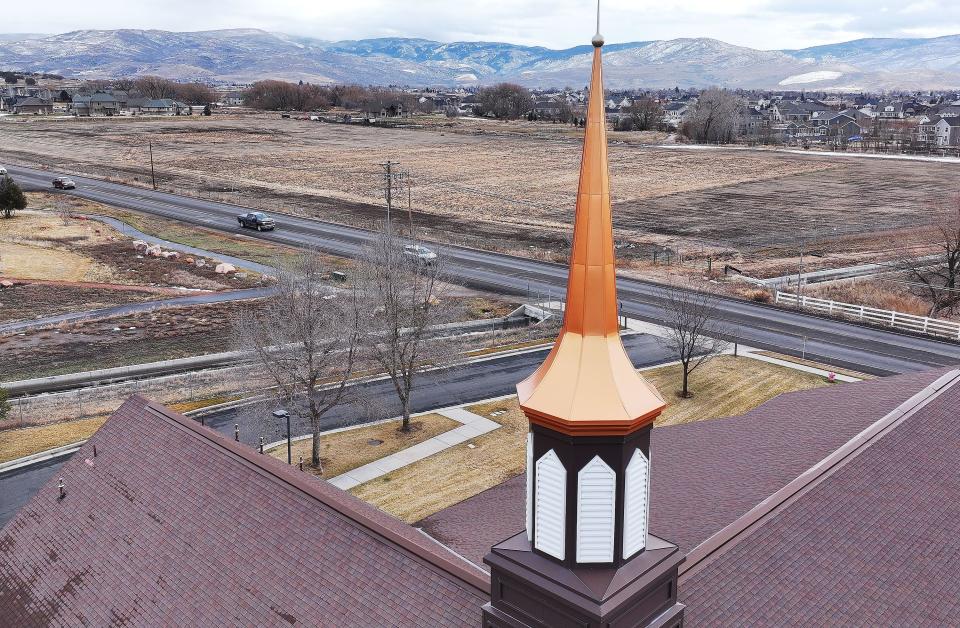
Glass’ path to Portugal
George’s journey to Portugal began as many of life’s journeys do, with marriage. Born an Episcopalian, he converted to Catholicism when he married his wife, Mary. They passed the faith on to three sons, all married with a total of six grandchildren between them.
In 2014, the couple’s Catholic faith was confirmed when they witnessed a personal and life-changing miracle while visiting the Sanctuary of Fátima in Portugal. The experience made such an impact that George and Mary vowed to return to the majority-Catholic country after selling George’s business.
But the opportunity to live in Portugal didn’t come in the form of a retirement getaway. After working on Donald Trump’s 2016 presidential campaign as a top fundraiser and leading member of Catholics for Trump, George was asked — as he had been during the campaigns of George W. Bush and John McCain — whether he wanted a role in the administration.
Just months after Trump’s inauguration, George was nominated as “Ambassador Extraordinary and Plenipotentiary of the United States of America to the Portuguese Republic” and became the first political ambassador to arrive in Europe from the Trump administration.
To George and Mary, it was a dream come true — and an answer to prayer. But it was no walk on the green.
“Being an ambassador is not about playing golf. It’s about serving your country. And it’s an exhausting affair,” George said.
According to George and Mary, the 10-hour work days in the Lisbon embassy consisted of meeting government officials, strengthening economic ties between the two countries and coordinating emergency aid. The long hours were almost always followed by official events at the embassy residence or visits with foreign or U.S. dignitaries, including Supreme Court justices Sonia Sotomayor and Ruth Bader Ginsburg, and Israeli Prime Minister Benjamin Netanyahu.
“To be able to provide service at that level, and especially for your government, for your country, it’s an amazing moment, it’s an amazing thing to do,” George said.
During his service, George received the U.S. Department of State’s exemplary diplomatic service award for employing private sector skills to improve bilateral relations and was also the recipient of Portugal’s Order of Prince Henry knighthood. Key to his success, George said, was the immediate connection he formed with many Portuguese leaders based on their shared convictions.
“We should have a separation of church and state,” he said, “but those moral and ethical values that you have because of your church, you have to take to work with you. I mean, that’s the backbone of who you are and what you do.”
This lesson was ingrained in him, George said, by his “mentor,” Jon Huntsman Jr., the former Utah governor and ambassador to Russia from 2017 to 2019, whom George called “the best we have.”
George saw another example of a prominent Latter-day Saint statesman navigating church and state when the late Utah Sen. Orrin Hatch visited the president of Portugal to discuss the country’s nearly 50,000 Latter-day Saints and invited George to tour the soon-to-be-completed Lisbon temple.
While he called the edifice “magnificent,” what may have been even more stunning to George was how a country of 10 million — 80% of whom are Catholic — welcomed and accommodated Hatch’s minority faith.
Unfortunately, the same could not be said for the proposed construction of a new major mosque in downtown Lisbon, which faced major pushback during Glass’ tenure, according to the ambassador.
“The fight that went on, the emotional fight was the polar opposite of what went on with with the temple. And so we really got to see both sides of that,” George said.
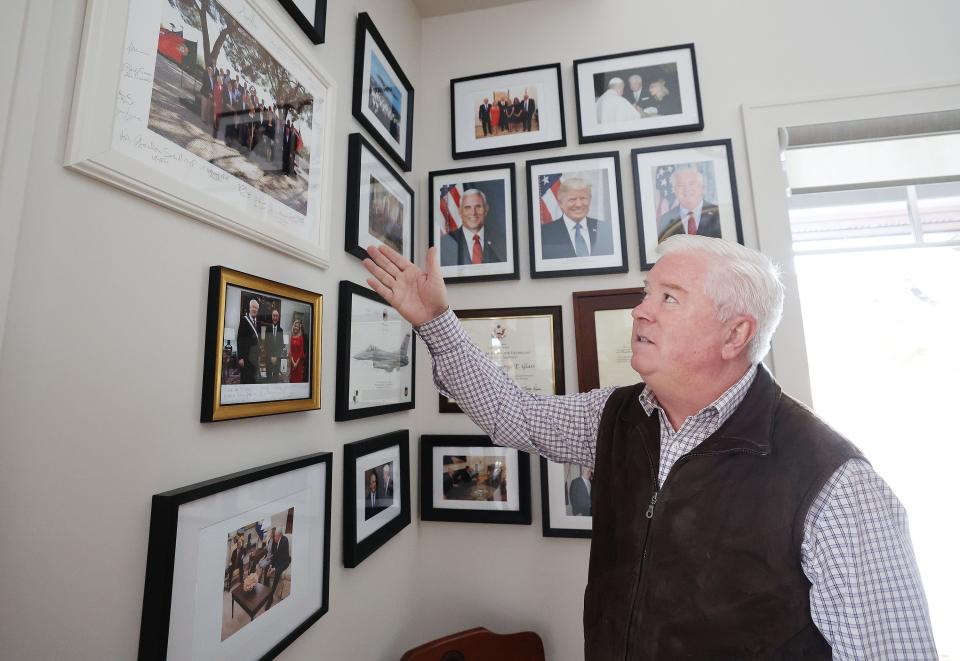
Temple controversy
Having seen and experienced religious persecution for himself, Glass believes that’s not what is behind opposition to the Heber temple — which, if the public comments at county council hearings are any indicator, enjoys the support of the vast majority of Heber Valley residents.
“Here, with the temple being built, it’s not a religious issue,” George says. “The pushback and the issues are all procedural, organizational, environmental, and so forth.”
However, county officials believe they have done their due diligence, often going the extra mile, to review the community’s concerns.
“Everyone had the ability to be able to voice their concerns and their opinions,” said Luke Searle, a member of the Wasatch County Council. “The process and the things in place worked to allow people’s voices to be heard.”
Following the announcement of the temple’s proposed location in September 2022, the county council began researching in earnest. The first signs of opposition arose after Core Architecture, the firm overseeing the temple project, in concert with the county, began exploring an update to a decades-old lighting ordinance, which prohibited upward light but did not regulate other important features of dark sky compliance, such as brightness, color temperature and the reflectivity of building surfaces.
To demonstrate its effort to improve the county’s dark sky codes and provide needed guidance for the temple project, the county hired a professional dark sky consultant, who, along with Core Architecture, provided recommendations to the planning commission.
The final version of the ordinance, presented by the planning commission in March and the county council in April, represented one of the most progressive in the country, according to John Barentine, the principal consultant at Dark Sky Consulting.
“You’re absolutely hitting the highlights of all of the pieces I would consider to be part of a dark sky friendly ordinance,” Barentine said at the April public hearing.
But following the ordinance’s approval, a lawsuit was filed against Wasatch County by Save Wasatch Back Dark Skies, a group co-founded by Red Ledges resident Lisa Bahash. Plaintiffs also included Laurie Brown, also of Red Ledges, and several other individuals who have not made their addresses public.
Another lawsuit was filed following the county council’s unanimous approval of the temple project on Nov. 8 during a public hearing. In this case, the plaintiffs objected to the county’s decision to approve the temple project through a legislative development agreement as opposed to a conditional use permit. Both processes are proper under state law.
These legal challenges were also accompanied by a referendum application submitted by eight Red Ledges residents, including multiple individuals named as plaintiffs in the two previously filed lawsuits. If the referendum sponsors gather 3,200 signatures before Jan. 25, the county’s decision to approve the temple project will appear on the 2024 ballot.
Other neighbors spoke to Deseret News and expressed frustration with the opposition to the temple and a perceived double standard among the group of Red Ledges residents, noting the affluent community has its fair share of brightly lit, large homes. They also noted the continual stream of traffic, particularly construction vehicles, which have become a mainstay in the neighborhood as a result of Red Ledges’ sprawling growth, which includes maintaining two golf courses.
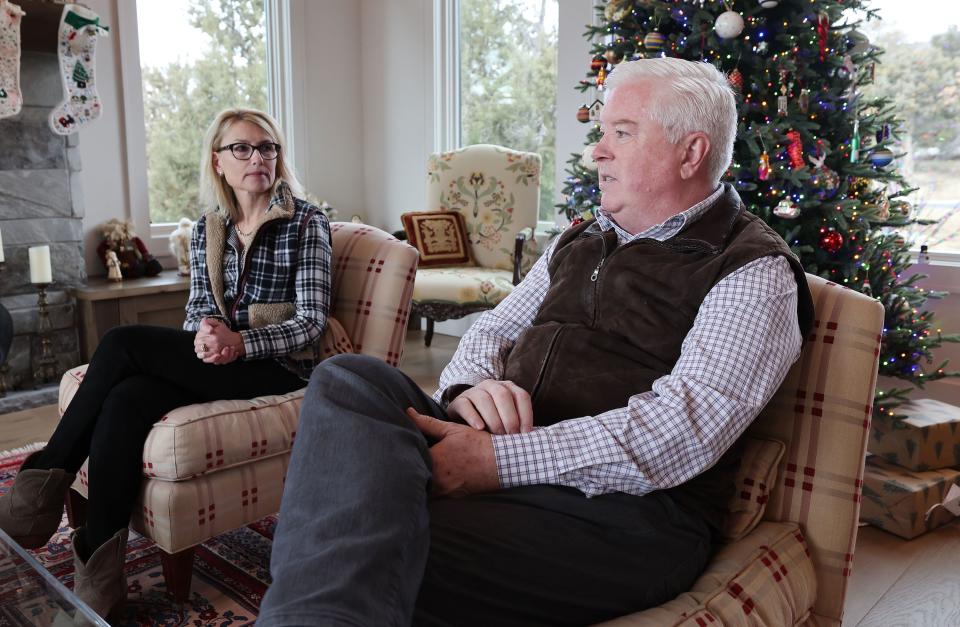
Concerns and compromises
George said there have been valid concerns expressed related to the project, and some Red Ledges properties are understandably invested in their view of the valley, which for some would now include a Latter-day Saint temple.
During the public feedback process, some Wasatch County residents also worried that the temporary dewatering of the construction site during excavation would affect the aquifer and drinking water.
However, county officials and residents explained this process is common across Heber Valley, which has a high water table due to its proximity to the Provo River. Shallow ground water, located between 10 and 40 feet down, will be temporarily redirected during the temple’s construction. This water is separated from aquifer-sourced drinking water by roughly 100 feet of earth, including layers of both granite and clay, according to findings by Core Architecture that were confirmed by an independent engineer hired by the county.
Another source of confusion was the county’s decision to approve the temple project through a legislative development agreement as opposed to the typical conditional use permit. The legislative development agreement, a legally valid alternative, as the deputy county attorney repeatedly pointed out, allows for a permanently binding deal that incorporates county demands and the church’s designs from the start, rather than being open to ongoing revision from both sides, as is the case under a conditional use permit.
As part of the legislative development agreement, the church made numerous concessions and committed to various community improvements. In response to worries over the height of the temple, which is located in the valley rather than up on the mountainside, the proposed building grounds were lowered. The church also decreased the amount of light that will shine on the building, reduced the color temperature and scheduled turning off the light each night at 11 p.m. The church went so far as to even change the exterior stone to minimize light refraction.
The church also addressed worries about increased traffic with a commitment to widen and improve the street where the temple is located, including installing a new roundabout and completing a disconnected trail system. A traffic study commissioned by the church found that traffic flow on the road will improve following the construction of the temple.
Some of these changes or compromises may have gone unnoticed by some concerned residents, however. When George and Mary brought up the temple’s light reduction, their neighbors hadn’t heard of it.
“There’s a lot of emotion that goes on with this. And we’re trying to temper this down, but ultimately, both sides need to compromise and are compromising,” George said. “I hope that it gets to the point that we can have a big beautiful temple built that everybody can celebrate.”
To the Glasses, who recently helped to construct a Catholic parish in their home state, the building of new houses of worship is a “testimony to how strong the faith is” in a given location.
George and Mary now attend the St. Lawrence church in Heber City, where they say Mass is often standing room only. Since moving to the valley, they’ve witnessed parishioners raise funds for a new Catholic church down the street from where the temple will soon stand.
George is hopeful when the time comes to lay the first brick, the community will come together in support of the Catholic edifice, regardless of religious affiliation.
“I’m pretty convinced that’s what will happen. And then that’ll be sort of the moral to the story of the Heber Valley: Shouldn’t we welcome all?” George said. “And I think, ultimately, that’s what comes out.”
